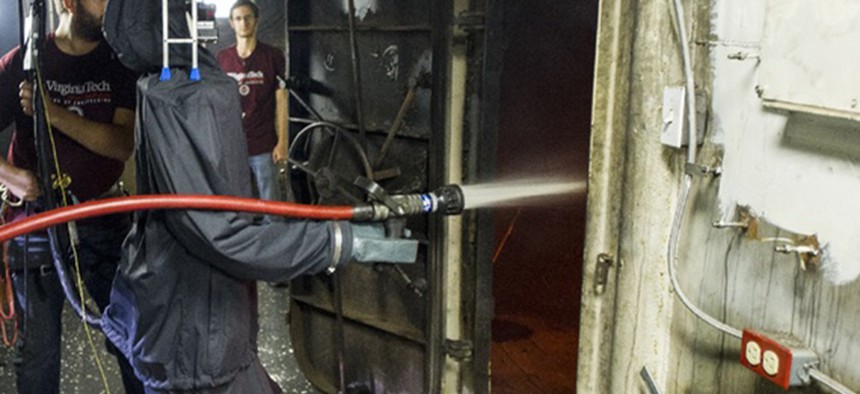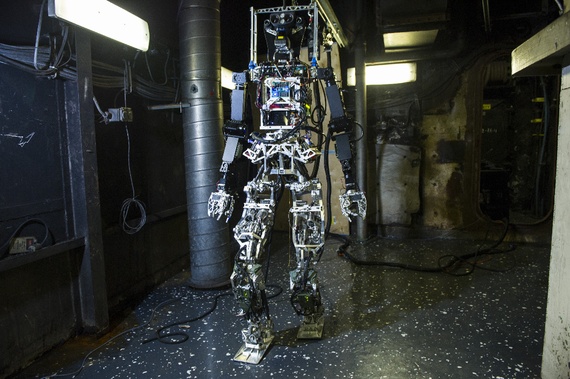
Office of Naval Research
The Navy Has Built a Fire Extinguisher That Walks
A new robot firefighter can see through smoke and carry a hose on its own.
Fire extinguishers are ubiquitous now. It's rare to be more than a few feet away from one if you're in a city. Which is remarkable, really, given that we're not all that far removed from a time when putting out a fire meant grabbing a bucket.
The heavy red cylinders that hang in kitchens and office buildings today are the latest in a centuries-long line of extinguisher design. It wasn't so long ago that humans tried putting out fires by lobbing glass grenades filled with chemical suppressants at them, or by exploding canisters full of extinguishing solution and gunpowder.
We're now rapidly approaching a time when robots may do the fire extinguishing for us. (Thanks, robots.) The Navy this week unveiled SAFFiR, a slender 5-foot-10-inch, 143-pound bot designed to maneuver complex spaces—specifically, aboard military ships—and use a hose to put out fires.

Office of Naval Research
It can walk around and see through dense smoke using infrared stereo-vision and a rotating laser, the Navy said in an announcement . "The robot has the ability to do autonomous tasks," said Brian Lattimer, one of the mechanical engineers who designed it, "but we have a human in the loop to allow an operator to intervene in any type of task that the robot’s doing."
Engineers are building SAFFiR so it can do more than fight fires. They plan to give the bot enhanced intelligence, sophisticated computing power, extra-long battery life, and sensors so it can detect ship corrosion, leaks, and other issues. All of which is part of a longer term plan to integrate teams of robots and humans to complete sometimes dangerous work in a way that keeps people safe.
"We’re working toward human-robot teams," said Thomas McKenna, a Navy program manager for human-robot interaction, in a statement. "It’s what we call the hybrid force: humans and robots working together."






